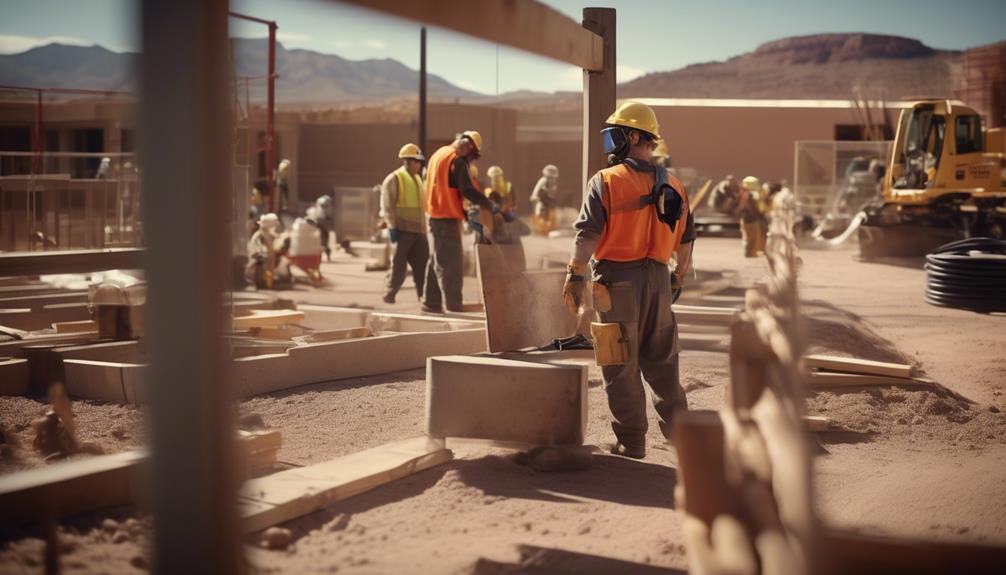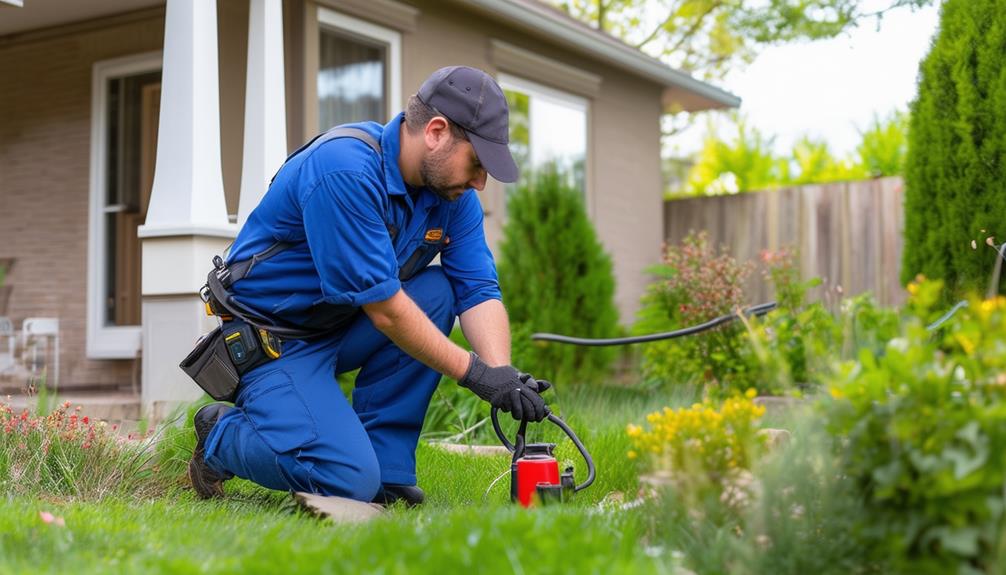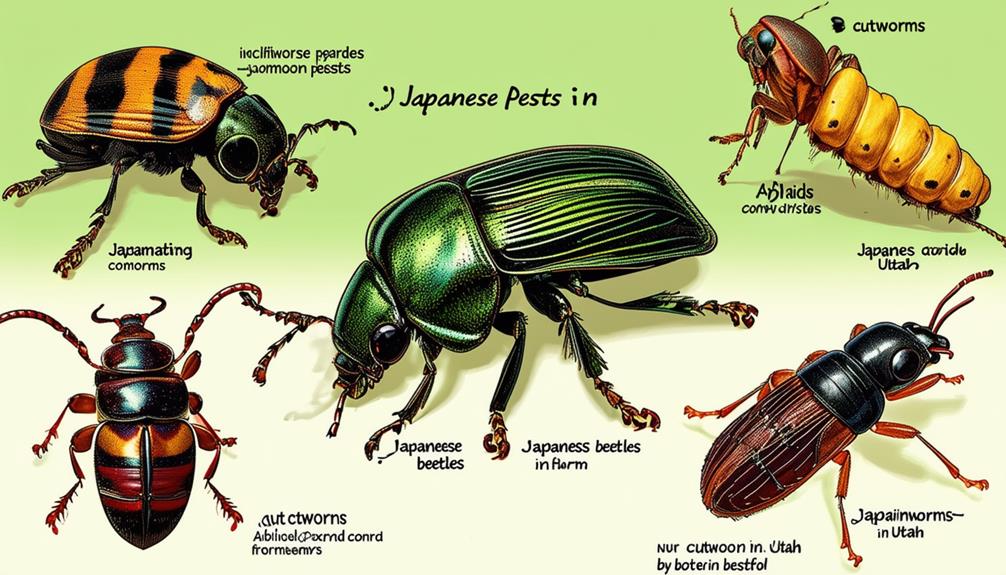In the realm of construction sites, where progress and development are at the forefront, a hidden invasion lurks beneath the surface. Like mice to cheese, rodents are drawn to the bustling activity of construction sites in St. George, Utah.
As the old saying goes, ‘out of sight, out of mind,’ but the consequences of neglecting rodent control can be far-reaching. So, how can you ensure that your construction site remains rodent-free and free from the damage they can cause?
Join us as we explore the best practices that will help you safeguard your construction site from these unwelcome guests.
Key Takeaways
- Understanding rodent behavior and habits is essential for implementing effective rodent control strategies on construction sites in St. George, Utah.
- Proper site preparation, such as removing existing rodent nests and burrows, and managing food sources, is crucial in preventing rodent infestations.
- Implementing exclusion measures, such as sealing openings and gaps in the building’s foundation and walls, helps prevent rodents from entering the construction site.
- Regular monitoring, trapping, and removal of rodents are important for maintaining a rodent-free environment on construction sites.
Understanding Rodent Behavior
If you’re looking to understand rodent behavior, it’s important to recognize their inherent instincts and habits.
Rodents, such as mice and rats, have specific nesting habits. They seek out warm and secluded areas to build their nests, often in dark corners or hidden spaces within homes or buildings. These nests are made from soft materials like shredded paper or fabric, providing a cozy environment for them to breed and raise their young.
When it comes to food preferences, rodents are opportunistic feeders. They’ll consume a wide variety of foods, including grains, seeds, fruits, vegetables, and even garbage. This adaptability allows them to thrive in various environments, making it crucial to eliminate potential food sources to deter their presence.
Understanding these habits can help in implementing effective rodent control strategies.
Site Preparation for Rodent Control
To effectively prepare a construction site for rodent control, it’s essential to understand how rodents’ nesting habits and food preferences can impact their presence. By knowing their behavior, you can take the necessary precautions to prevent infestations.
One of the first steps is to remove any existing rodent nests or burrows before starting construction. This will eliminate potential shelter for rodents.
Additionally, ensure that all food sources, such as exposed garbage or improperly stored materials, are properly managed and stored away from the construction site.
Seal any openings or gaps in the building foundation or walls to prevent rodents from entering.
Regularly inspect the site for signs of rodent activity, such as droppings or gnawed wires, and take immediate action to address them.
Implementing Exclusion Measures
One effective way to prevent rodents from entering a construction site is by implementing exclusion measures. These measures involve using various techniques to keep wildlife out and prevent pests from infesting the site.
One common exclusion technique is the installation of wire mesh or hardware cloth around openings such as vents, pipes, and utility lines. This prevents rodents from entering through these small gaps.
Additionally, sealing cracks and gaps in the building’s foundation and walls can help to further exclude rodents and other pests. It’s also important to ensure that all doors and windows are properly sealed and fitted with weather stripping to prevent entry.
Effective Rodent Monitoring and Trapping
Now let’s move on to discussing effective monitoring and trapping methods for rodents, which are crucial to maintaining control over their presence on construction sites.
To effectively monitor rodents, it’s important to place bait stations strategically throughout the site. These stations should be checked regularly for signs of rodent activity, such as gnaw marks or droppings.
By using various rodent baiting techniques, such as using different types of bait or changing the placement of the stations, you can increase the likelihood of attracting and trapping rodents.
Additionally, implementing a rodent population management plan is essential. This plan should include regular inspections, proper sanitation practices, and prompt removal of captured rodents.
Maintaining a Rodent-Free Environment
Maintaining a rodent-free environment at a construction site involves several key practices. First and foremost, proper sanitation is crucial. This means regularly cleaning all areas and removing any debris that could attract rodents. It’s also important to ensure that food and water sources are not easily accessible to rodents.
In addition to sanitation, inspecting the construction site on a regular basis is essential. This means looking for any signs of rodent activity, such as droppings or gnaw marks. If any signs are found, prompt action should be taken to address the issue.
To prevent rodents from entering the site, it’s important to seal any gaps or cracks in the building’s structure. Even small openings can provide an entry point for rodents, so thorough sealing is necessary. This can be done using materials such as caulk or expanding foam.
Another important prevention method is to install wire mesh or screens on ventilation openings. This will prevent rodents from entering through these openings while still allowing for proper ventilation.
Properly managing dumpsters and trash bins is also crucial. These should be kept tightly closed at all times to prevent rodents from accessing the waste inside. Regularly emptying and cleaning them will also help prevent rodent infestations.
While implementing these practices is important, it is also recommended to enlist the help of professional pest control services. These experts can conduct regular inspections, identify potential problem areas, and implement effective control measures.
Frequently Asked Questions
Are There Any Legal Requirements or Permits Needed for Implementing Rodent Control Measures on Construction Sites in St. George, Utah?
To implement rodent control measures on construction sites in St. George, Utah, you need to be aware of the legal requirements and permits needed. It’s important to comply with these regulations to ensure a safe and efficient construction process.
What Are Some Common Signs That Indicate the Presence of Rodents on Construction Sites?
If you spot chewed wires, droppings, gnaw marks, or nesting materials on your construction site, these are common signs of rodent presence. It’s important to take immediate action to prevent further damage and protect your site.
Can Rodents Cause Damage to Construction Materials or Equipment?
Yes, rodents can cause significant damage to construction materials and equipment. To prevent this, implement measures like sealing openings, removing food sources, and using rodent repellents. Regular inspections are crucial for early detection and prompt action.
Are There Any Specific Construction Materials or Techniques That Can Help Prevent Rodents From Entering the Site?
To prevent rodents from infiltrating your construction site, choose construction materials and techniques that deter these pesky critters. Incorporate rodent-resistant materials and employ effective prevention techniques to safeguard your site.
How Often Should Rodent Control Measures Be Implemented on Construction Sites to Ensure Effectiveness?
To ensure the effectiveness of rodent control measures on construction sites, it’s important to implement them regularly. By doing so, you can maintain a proactive approach and minimize the chances of rodent infestations.




